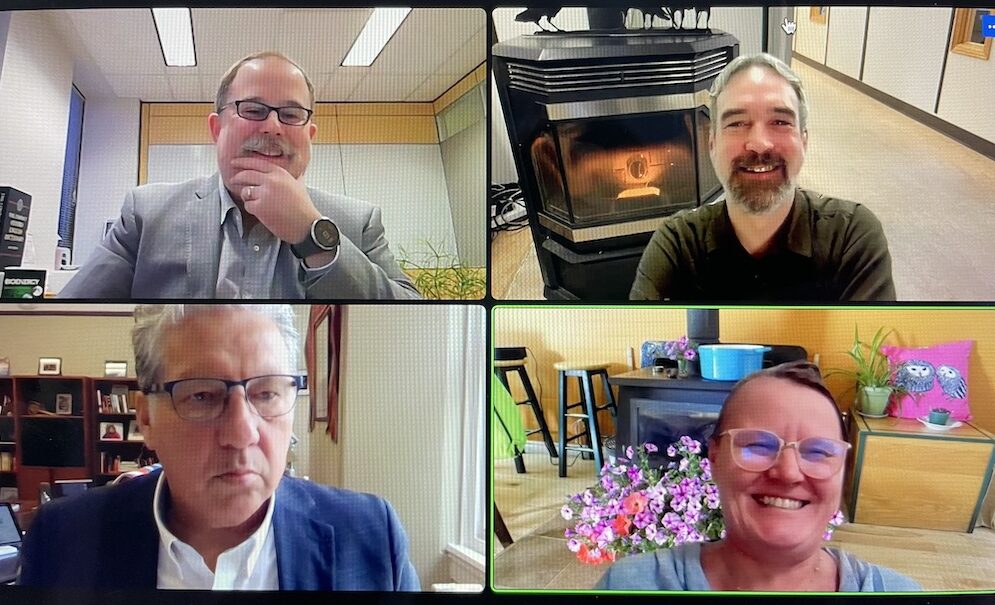
News
N.W.T. energy conference lights up biomass heating solutions
January 31, 2023
By
Maria Church


Biomass as a low-carbon heating option in the Northwest Territories is playing an increasing role and, if the territorial government has anything to say about it, will continue to help reduce emissions and fossil-fuel reliance in the North.
Government of the Northwest Territories’ (GNWT) director of energy, Robert Sexton, made that message crystal clear during his opening remarks for N.W.T. Biomass Week – a virtual event running all week to accelerate the use of bioenergy.
“It’s played a significant role in reducing our corporate emissions,” Sexton said, noting 33 per cent of GNWT buildings are space heated with wood pellets, which includes 45 buildings and nearly 24 MW of capacity.
N.W.T. Biomass Week, run by the Arctic Energy Alliance (AEA) in partnership with the Wood Pellet Association of Canada, is five full days of presentations exploring successful bioheat projects, funding opportunities, homeownership lessons, and new technologies and research. This year’s Biomass Week drew more than 260 registrations across the country.
Speaking virtually in front of a photo of the AEA office’s pellet stove in Yellowknife, executive director Mark Heyck said he finds it amazing how a traditional technology like burning wood for heat – “that has been used since time immemorial” – is going to be a central plank in their strategy to meeting climate targets.
“It’s been amazing to see that huge number of biomass projects that have a massive contribution to GHG reductions,” Heyck said in his opening address. He noted that the alliance has thus far funded 18 large-scale biomass projects in the territory.
In his presentation on the GNWT’s 2030 Energy Strategy, Sexton outlined a slew of current and new GNWT funding opportunities, which includes funding for wood stoves, residential, business and community rebates, capital asset retrofit funds, and GHG grant programs. He also noted two federal funding options: the Recapitalized Low Carbon Economy Leadership Fund and the Home Heating Oil Transition Fund.
The GNWT is reviewing its 2030 Energy Strategy next year and will be seeking public input soon. “Biomass will certainly play an increasing role in a lower carbon future in the N.W.T.,” Sexton said.
Canada’s Minister of Northern Affairs Dan Vandal gave a welcome address for Biomass Week speaking to the federal perspective on biomass a northern heating solution.
“Every day we see more and more the real-life impacts of climate change, but perhaps nowhere as profound as in the north. The north and the Arctic are warming at three times the global rate with significant impacts on infrastructure shoreline erosion while wildfire risk and permafrost stability,” Vandal said.
The minister noted that clean energy options like biomass lead to better health and better environmental incomes for all northern and Indigenous communities, while also leading to economic opportunities.
“For far too long the made-in-Ottawa approach to the north into the Arctic has limited the regions’ possibilities. We need to put the future in the hands of the people who live in the region and experience climate change most profoundly so we’re looking to indigenous leadership to guide us through this climate crisis across Canada,” Vandal said, noting that funding opportunities will prioritize Indigenous-led projects.
Monique Frison, the director general of Natural Resources Canada’s Canadian Forest Service, gave a final welcome to Biomass Week attendees.
Biomass systems, she said, support multiple objectives: energy security, sovereignty, economic development, as well as climate objectives.
“Forest biomass like wood pellets are made from residues and waste wood that would otherwise be going to a landfill or burned on site. We can also get energy from damaged wood that has been damaged in forest fires or by pests,” Frison said. “Of course we can replant trees and restore land, continuing the forest cycle so we see a continuing need for biomass solutions, especially for communities who will not be able to connect to a to a larger grid.”
Frison noted the Canadian Council of Forest Ministers endorsed a renewed Forest Bioeconomy Framework for Canada, which builds on the 2017 document aimed at accelerating a sustainable bioeconomy.
“The forest bioeconomy means many things to us: for example, we seek to generate the most value we can from whatever is harvested, and we also seek to use renewable biomaterials as substitutes for non-renewable materials or where it’s a lower carbon alternative to something that we’re using currently. For us, energy from biomass accomplishes both of these objectives,” Frison said.
The N.W.T. Biomass is a free virtual conference running all week. Check out the program and register for free to receive recordings of the sessions.
Print this page